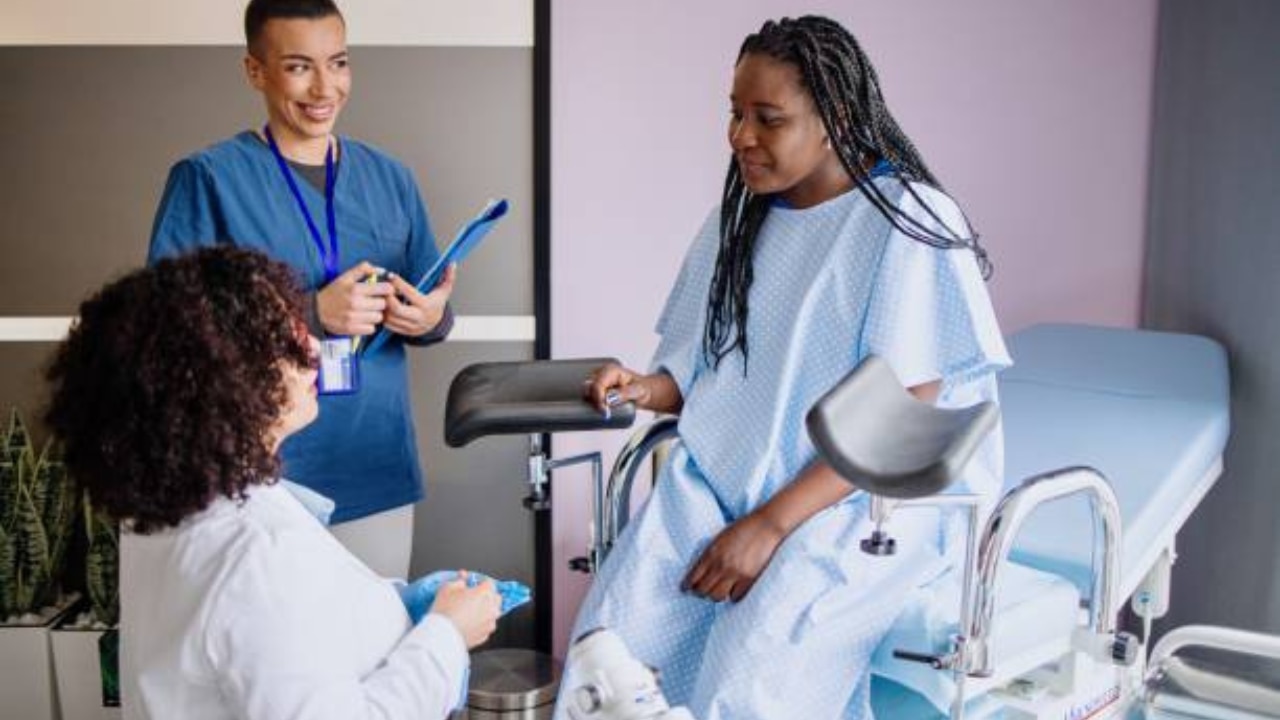10 ways to better manage the symptoms of endometriosis
There are ways to make it better.

Endometriosis
Don't miss out on the headlines from Endometriosis. Followed categories will be added to My News.
Managing Endometriosis isn’t always easy, but it's possible, with the right tools. Here are 10 ways to make endo-life easier.
Endometriosis is one of the most agonising and debilitating conditions a woman can suffer.
In Australia, one in nine women are diagnosed with endometriosis. Symptoms include intense pain to the stomach, back and hip areas, and the symptoms can alter quality of life.
Knowing as much about the condition as you can is a great start to managing these symptoms.
Like what you see? Sign up to our bodyandsoul.com.au newsletter for more stories like this.
1. Managing endometriosis symptoms medically
“Endometriosis is a common condition in women,” says leading Sydney fertility specialist Dr Raewyn Teirney, who features in Channel 9’s series Big Miracles. “It’s where cells similar to those that line the uterus (endometrium) grow in other parts of the body, such as the ovaries, bladder and bowel.”
Endometriosis, pronounced end-o-me-tree-oh-sis is a progressive, chronic condition where tissue that is similar to the lining of the uterus, known as the endometrium, is found outside the womb.
“Most commonly this tissue is found lining organs in the pelvic region such as the ovaries and the fallopian tubes, as well as the bladder and bowel,” explains Dr Raewyn. “Endometriosis can lead to painful inflammation, scarring and cysts. Women often can present with common symptoms such as abdominal-pelvic pain, heavy and often painful periods, painful sex and dark premenstrual bleeding. Endometriosis can also cause infertility, even in mild cases.”
Alongside the physical symptoms, sufferers of endometriosis can also have reduced quality of life by having to take days off work, study or school because of the condition, which can also lead to anxiety and depression.
“Having endometriosis is challenging physically and emotionally and the causes of endometriosis are yet to be fully understood,” says Dr Raewyn. “Often we can manage it with medication, or surgery, which allows women to have wellbeing and a full quality of life and health. Many women even go on to have successful pregnancies and healthy babies, as we have seen with celebrities such as Kayla Itsines and Bindi Irwin.”
2. Speak to your doctor at an early age
Periods are normal. Period pain isn’t, despite what we are led to believe.
“Of course, some cramping is to be expected from time to time,” says Dr Raewyn. “But if it's causing you to miss out on activities such as school sport, or work, or simply general outings, then ask your doctor to refer you to a specialist for testing.
“Around one in 10 women of reproductive age are affected by endometriosis. It can start as early as your teenage years and can go undetected for up to a decade before being diagnosed, often when you are trying to have a baby. Consequently, women over 30 who are yet to have a child are often diagnosed for the first time with endometriosis. So, always ask your GP for testing and don’t let anyone dismiss your pain as ‘normal’.”
3. Maintain a healthy body weight
“Being overweight can affect the severity of endometriosis and its symptoms,” says Dr Raewyn. “Keeping your weight within a healthy BMI is a good tool to have in your kit to help manage the symptoms.”
"When it comes to maintaining a healthy weight, it's important to pay attention to the foods we eat,” says accredited nutritionist Faye James. “Avoid processed foods, sugary drinks, fried foods, and highly processed snacks. These tend to be high in calories, sugar, and unhealthy fats. Instead, embrace whole, nutrient-dense foods such as fruits, vegetables, whole grains, lean protein and healthy fats. These foods are low in calories and can help you feel full and satisfied, plus provide important nutrient-dense fuel for the body."

4. Avoid inflammatory foods and drinks
Alcohol, caffeine, processed and high sugar foods, and foods that are high in vegetable oils are highly inflammatory.
“For women with endometriosis, consuming these types of foods can worsen inflammation and increase pain and symptoms,” says Faye. “Avoid or limit consumption of these foods and instead focus on a diet rich in anti-inflammatory foods such as fruits, vegetables, whole grains, lean protein, and healthy fats to help manage symptoms.”
5. Exercise
“Regular exercise of four hours per week can help with some of the symptoms of endometriosis pain,” says Dr Raewyn. “Gentle exercise such as yoga and Pilates can help, especially on the days when you are feeling lethargic. The gentle, meditative movement will help calm the mind and could help ease the pain somewhat.”
6. Eat high fibre foods
High-fibre foods such as lentils and legumes, whole grains, nuts and seeds can assist the digestive system and help the bowel to run smoothly.
"Eating high fibre foods can help manage symptoms of endometriosis by promoting regular bowel movements and reducing constipation, which can be a common symptom of the condition,” says Faye. “In addition, high fibre foods such as fruits, vegetables, and whole grains can help regulate hormone levels and reduce inflammation in the body. It is recommended to consume at least 25-30 grams of fibre per day to support overall health and help to manage endometriosis symptoms."

7. Get plenty of antioxidants
"A diet high in antioxidants, such as fresh fruits and vegetables, is also important to manage symptoms of endometriosis. I recommend eating at least eight to 10 serves of fruit and veggies per day,” says Faye.
“Antioxidants help to reduce the oxidative stress in the body which may contribute to pain and other symptoms associated with endometriosis. In addition, fruits and vegetables are high in vitamins and minerals that support overall health and wellbeing. Including a variety of colourful fruits and vegetables in your diet could help manage symptoms and promote overall optimal health."
8. Embrace omega-3
Omega-3 is a powerful anti-inflammatory fatty acid with many benefits. This can be consumed in the form of fish or cod liver oil, chia, flax or hemp seeds, walnuts or oily fish such as salmon and mackerel. Faye suggests consuming at least two to three servings of fatty fish per week.
9. Minimise gluten intake
“For some people, reducing or eliminating gluten can also be a good option if they are experiencing irritable bowel syndrome symptoms (IBS) that might be associated with endometriosis,” says Faye. “These include bread, flour, oats and pasta.”
10. Meditation and Machines
"Meditation can help when it comes to managing endometriosis symptoms,” says Dr. Raewyn.
You can easily download an app for guided meditation. Dr. Raewyn also recommends a good old fashioned hot water bottle, or investing in a TENS (transcutaneous electrical nerve stimulation) machine. It's a small portable device that can ease pain by using small pulses of gentle electric current to block pain signals by stimulating different nerves and causing the release of endorphins.
Originally published as 10 ways to better manage the symptoms of endometriosis






